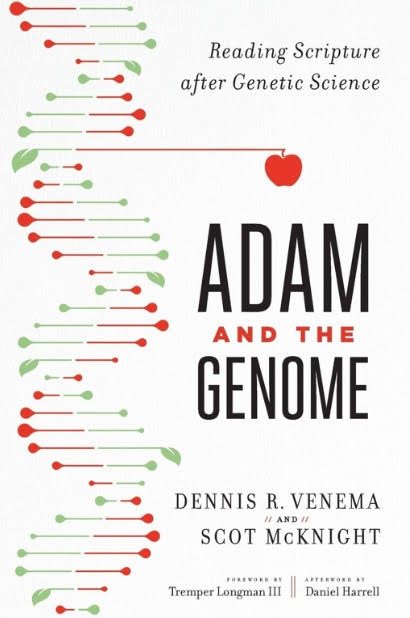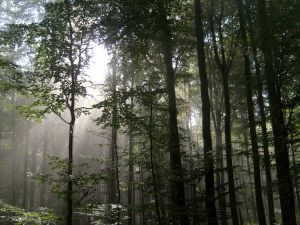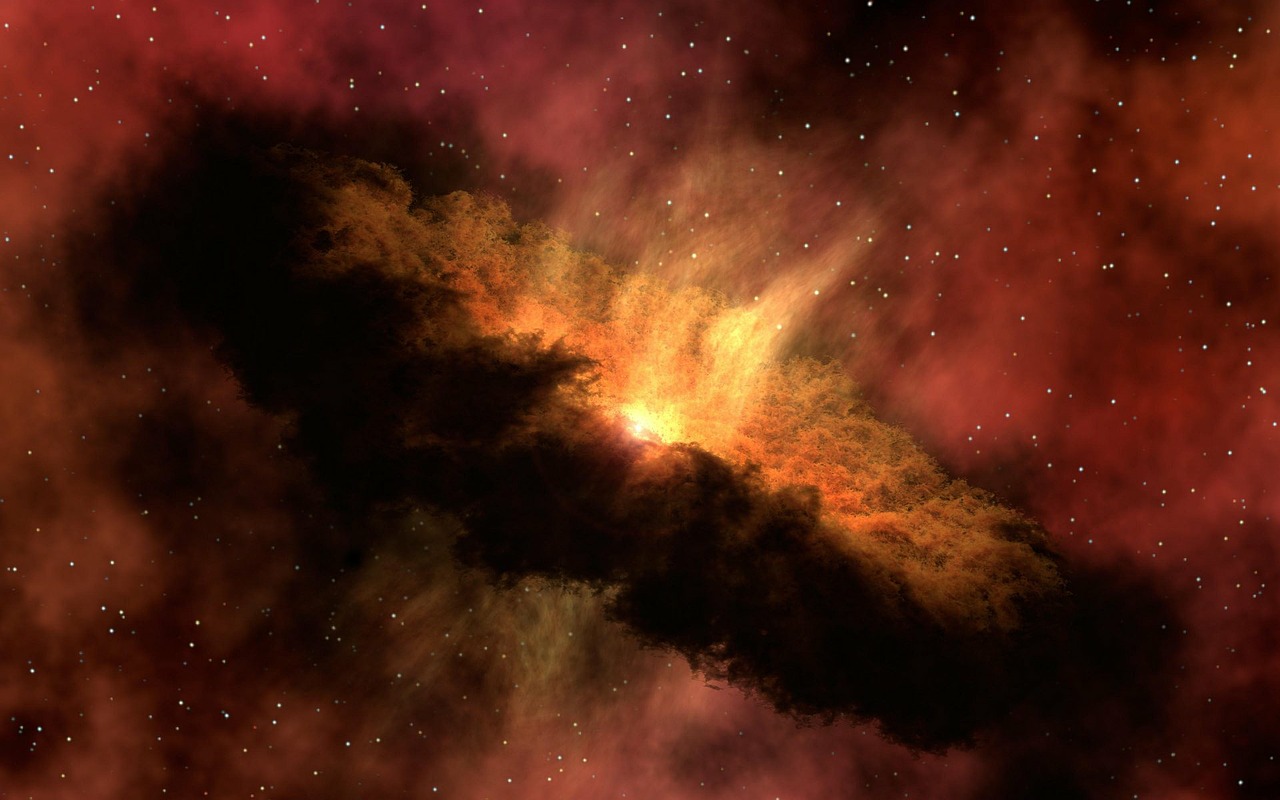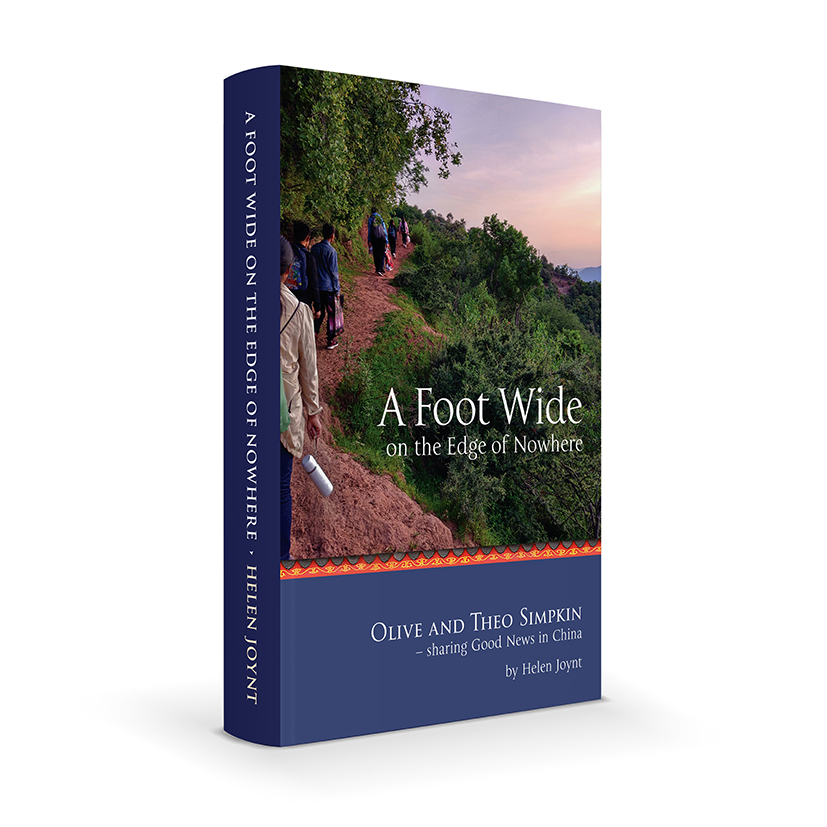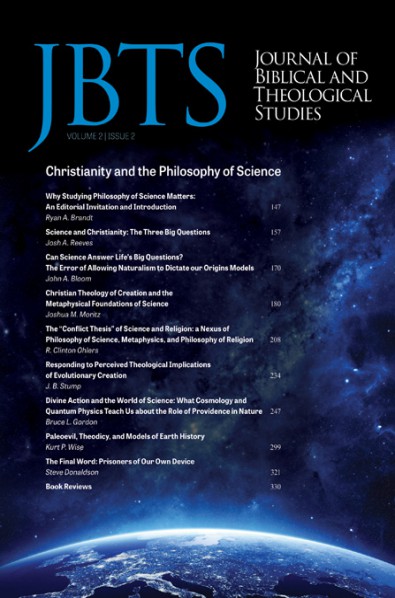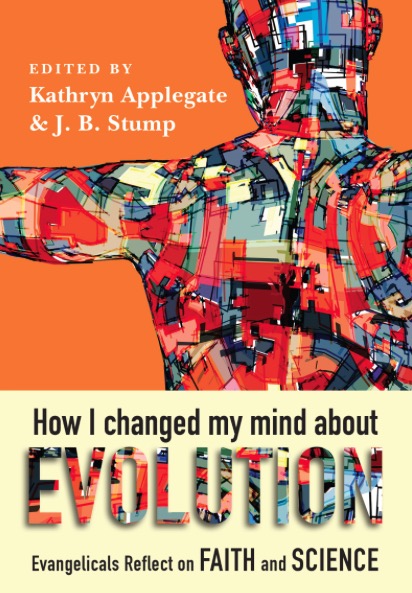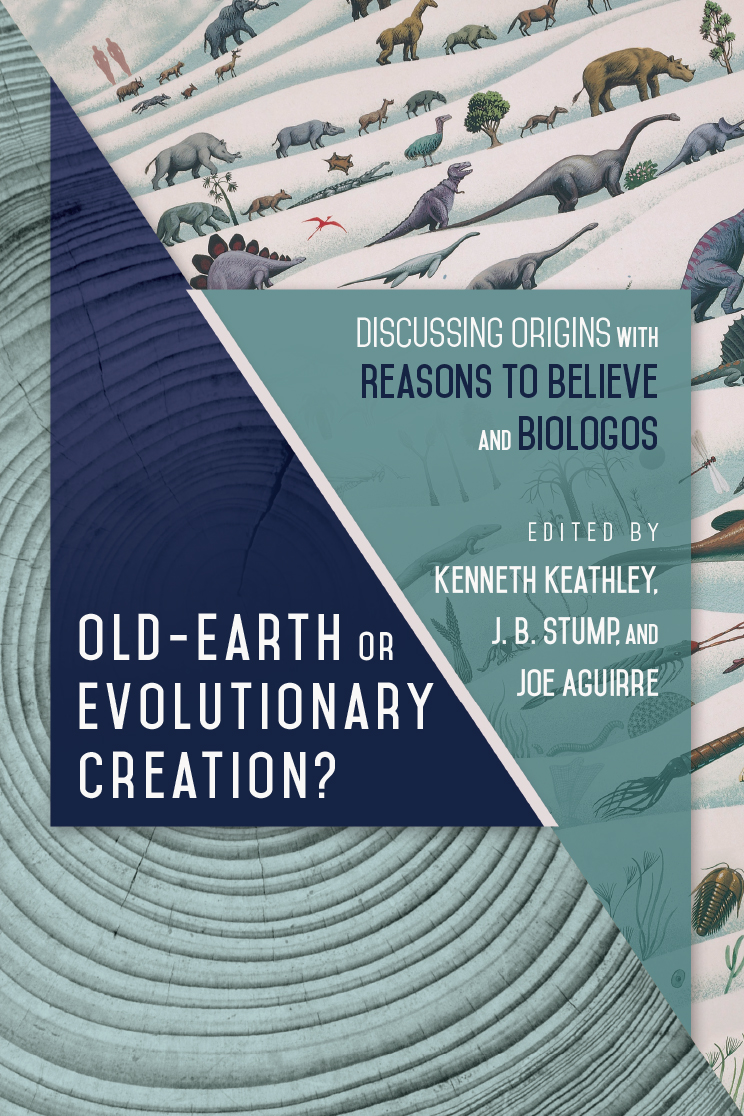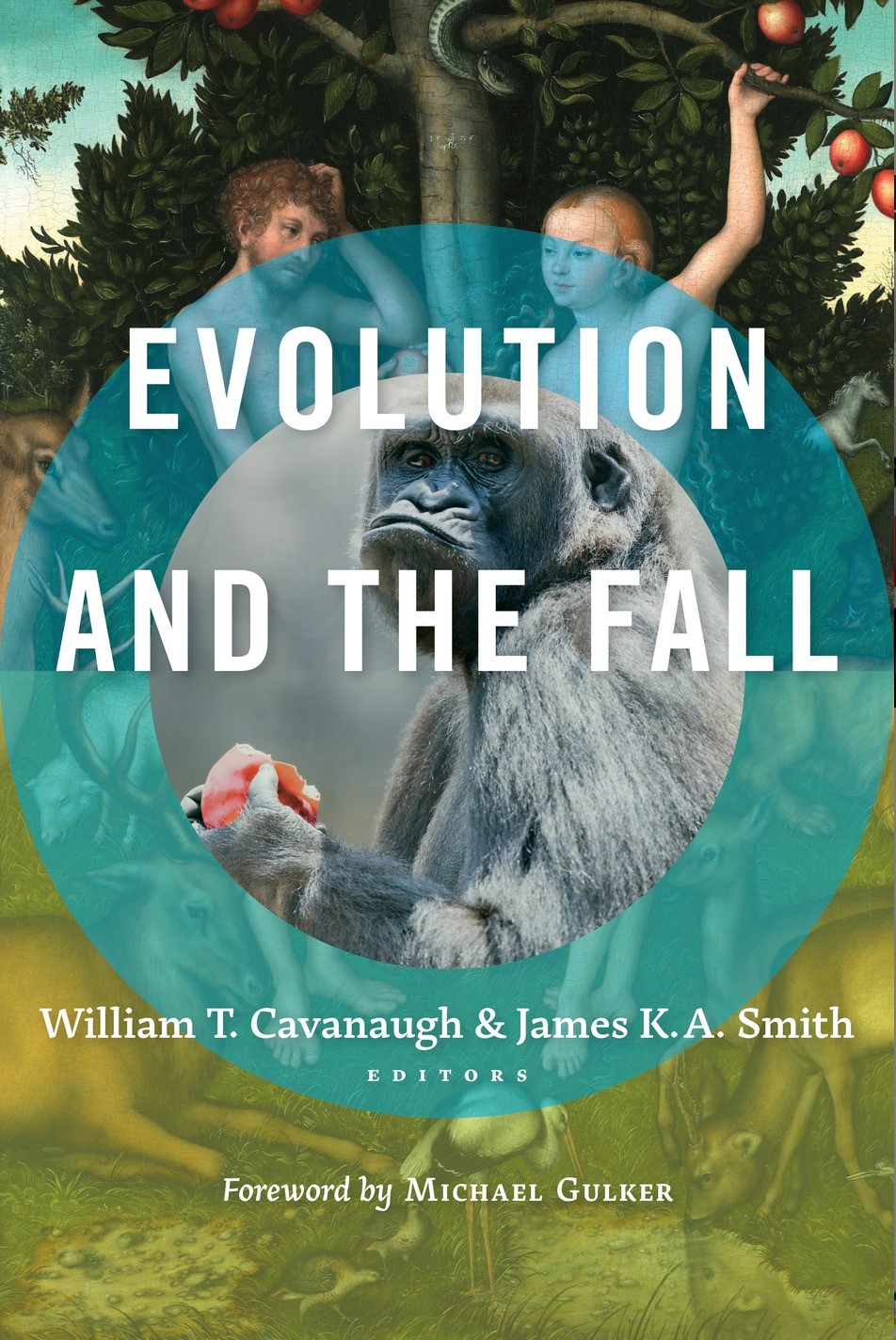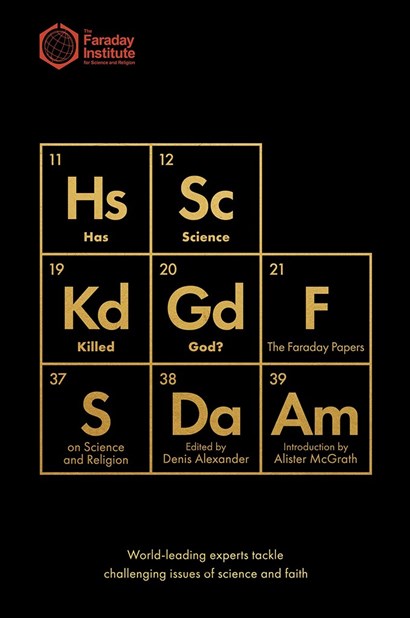
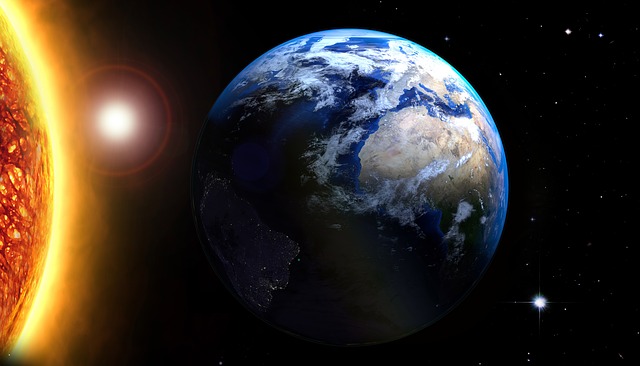
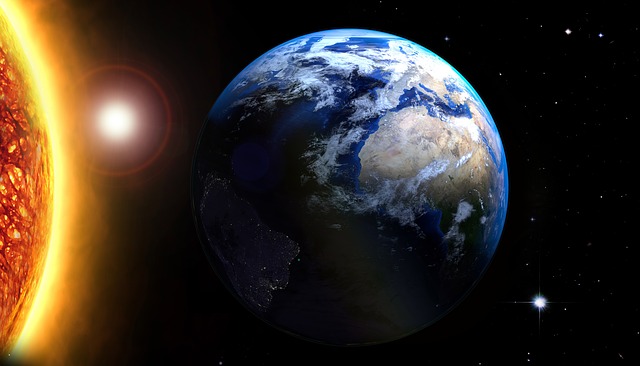
Christian Views of Extra Terrestrial Intelligence (1600-2000): An Alien Concept?
Jennifer Laing, August 2002
Christian Views of Extra Terrestrial Intelligence (1600–2000): An Alien Concept?
Jennifer Laing
School of Tourism & Hospitality, La Trobe University, Bundoora, Victoria
I could not get over the wonder of it, that all these thousands of millions of stars were great and beautiful globes, like our own, and that one simple God ruled over all these gleaming myriads of worlds.
(Heinrich Heine1 1797-1856)
Abstract
The 17th century saw a shift in Christian thinking about the existence of extra-terrestrial intelligence (ETI), in line with changes in scientific understanding. Mainstream Christian doctrine began to accept at least the possibility of a ‘plurality of worlds,’ although divided on the theological ramifications of such a doctrine.
For Christians, ETI has long been a difficult issue on which a wide range of opinions have been expressed or indeed suppressed; from dismissal of the idea as outright heresy, through to a belief that a wise and benevolent creator God could indeed have created a multitude of inhabited worlds replete with intelligent life.
This paper will examine the opposing Christian perspectives on ETI from 1600 to the close of the 20th century, and consider why some Christians have found the idea of intelligent life populating the universe confronting to their faith.
Key words
extra-terrestrial intelligence, ETI, Christianity, plurality of worlds, universe, faith, heaven, creation, geocentric, cosmology
Are We Alone?
Humankind has always sought to understand the world and its place within it. Looking up at the starry heavens and speculating on its size and
1 Quoted in Crowe (Crowe 1986 p. 262)
origin has been a popular pursuit across all cultures and periods in history. The birth and expanse of the universe is a common theme in stories handed down through the generations, as are theories on the existence of life, intelligent or otherwise, in other ‘worlds’.
The first recorded speculations by human beings on the existence of other planets that support life date from around the 4th century BC. The ancient Greeks, such as the scientist Epicurus (Dick 1982 p. 6), first referred to the concept of a ‘plurality of worlds’ (Worthing 2001).
There are infinite worlds both like and unlike this world of ours. For the atoms being infinite in number … are borne on far out into space. For these atoms which are of such nature that a world could be created by them or made by them, have not been used up either on one world or a limited number of worlds … so that there nowhere exists an obstacle to the infinite number of worlds.
(Epicurus 341–270 BC)
The question of whether we are alone in this vast and awe-inspiring universe strikes a deep chord. As the 13th century German philosopher Albertus Magnus said:
This is one of the most noble and exalted questions in the study of Nature.
(Magnus 1206–1280 2)
It is also a question that may pose difficult philosophical and theological issues, which potentially conflict with central tenets of faith.
Magnus’ pupil, St Thomas Aquinas, argued against a ‘plurality of worlds’, on the basis that:
If God had made other worlds they would be either similar or dissimilar to this one. If similar, then they would be in vain and this would not be consistent with divine wisdom. If dissimilar, none of them could contain all things and therefore none would be perfect, and an imperfect world could not be the work of a perfect Creator.
(Warrington 1995)
A Creator God
The Bible contains no direct references to the ‘plurality of worlds’ or the possibility of life, let alone intelligent life, elsewhere in the universe.
However, it is clear that God’s creation, as revealed in the book of Genesis, encompasses more than just the Earth:
In the beginning God created the heavens and the earth.
(Genesis 1:1 NIV)
2 http://www.physics.hku.hk/~tboyce/seti/01intro.html, viewed 2 July 2006
The Psalms in particular are scattered with references to God’s creation of the universe (‘the heavens are the work of your hands’, Psalm 102:25 NIV; ‘The skies proclaim the work of his hands’ Psalm 19:1 NIV) and the reverence afforded in Psalm 8 to the Lord for this work is palpable:
When I consider your heavens, the work of your fingers, the moon and the stars, which you have set in place, what is man that you are mindful of him, the son of man that you care for him?
(Psalm 8: 3–4 NIV)
It is therefore not surprising that some Christians would go on to speculate whether this act of creation—and care—extends to other worlds and other beings. Entertaining the possibility of life, let alone intelligent life, on other planets could potentially conflict with the central precept of Christianity, namely that God sent his Son to Earth to be sacrificed for our sins and that:
we have been made holy through the sacrifice of the body of Jesus Christ once for all.
(Hebrews 10:10 NIV)
Could Jesus’ death and resurrection have been intended to cover life on other worlds than our own? What did the words ‘for all’ mean here? (Worthing 2002 p. 79)
When Jesus exhorts us to ‘Love your neighbour as yourself’ (Mk 12: 31 NIV), does this commandment extend to the outermost reaches of the universe? The Book of John contains the famous verse:
For God so loved the world that he gave his one and only Son, that whoever believes in him shall not perish but have eternal life.
(John 3:16 NIV)
What does the ‘world’ mean in this context?3 Considering the possibility of intelligent life on other worlds in this manner opened up theological issues that remain the subject of discussion and conjecture to this day.
[S]hould intelligent extraterrestrial life be discovered one day, developing a cogent response with regard to the Christian doctrine of the Incarnation4 will not pose an insurmountable difficulty. Agreeing upon which response or model to adopt, however, is a different story.
(Worthing 2002 p. 81)
Christian scholars in the thirteenth century began to access works of antiquity, and discuss the possibility of the ‘plurality of worlds’, as explained by Epicurus and the Roman poet Lucretius. It met with sympathetic ears; if only on the grounds that God was omnipotent and
3 Note that the Greek translation of ‘world’ was in fact ‘Cosmos’.
4 That God became Man and lived among us in the person of Jesus.
could theoretically create a number of worlds if He so chose (Crowe 1986
p. 7). In 1277, Etienne Tempier, the Bishop of Paris, condemned those who were championing doctrines that could be construed as ‘limiting God’s power’ (Crowe 1986 p. 6), while others of this era, such as Jean Buridan (1295-1358), rector of the University of Paris, called into question Aristotle’s ‘geocentric’ theory—that there is only one centre of the Universe (Earth) and it is unique.
In general however, the orthodox Christian view on ETI until the 17th century was largely based on the geocentric theory, which prevailed as the ‘cosmological world view’ at the time.
It was the very framework within which society operated, the reference frame for human life, within which everything made sense.(Dick 2000)
This ‘reference frame’ was about to be placed under enormous pressure by scientific discoveries and certain works of popular literature throughout the late 16th and early 17th century, which saw the debate on ETI opened afresh in the Christian Church.
These innumerable worlds
Science in the early 17th century was opening up minds and eyes to the wonders of minutiae, as well as far-away places. The development of microscopes allowed the observer ‘to see a world in a grain of sand’ (Blake
c. 1800), while early telescopes showed the universe to human beings in greater detail than had ever been seen before. The irony was that these discoveries had their genesis in research carried out up to a century earlier.
In 1543, the Polish scientist Nicolaus Copernicus in his book De Revolutionibus Orbium Coelestium (On the revolutions of the celestial spheres) stated that the planets, including Earth, orbit the Sun. His work was followed by the great Danish astronomer, Tycho Brahe, whose observations of the stars showed that the skies were not fixed and unchanging as had been supposed. These views did not go unchallenged by some religious leaders of the time.
In the early 1600’s, Catholic theologians argued that Psalm 1045 required a fixed earth and a geocentric cosmology.
(Clarke 2001)
However, neither Copernicus nor Tycho were silenced by the Church because of their scientific views.
Tycho’s assistant, a German mathematician called Johannes Kepler, also speculated on the question of ‘plurality of worlds’. The following quote from Kepler in The Anatomy of Melancholy was included in the first
5 Psalm 104:5: ‘He set the earth on its foundations: it can never be moved’.
chapter of HG Wells’ 1898 science-fiction masterpiece, The War of the Worlds, and thus entered popular consciousness a few centuries later:
But who shall dwell in these worlds if they be inhabited? … Are we or they Lords of the World? … And how are all things made for man?
(Wells 1898)
The most celebrated case of martyrdom for the theory of a ‘plurality of worlds’, the Domenican friar Giordano Bruno, may in fact have been burnt at the stake for other reasons. In his text On the Infinite Universe and Worlds, in 1584, Bruno wrote that there is not merely:
one world, one earth and one sun, but as many worlds as we see bright lights around us
and these ‘other worlds’ must be inhabited ‘like our own’:
(Worthing 2002 p. 64)
For it is impossible that a rational being fairly vigilant, can imagine that these innumerable worlds, manifest as like to our own or yet more magnificent, should be destitute of similar or even superior inhabitants.
However, Crowe in The Extraterrestrial Life Debate: 1750–1900 argues that Bruno in fact was killed in 1600 more for his Arian beliefs:
his denial of Christ’s divinity and alleged diabolism than [for] his cosmological doctrines.
(Crowe 1986 p. 10)
Rather than being suppressed by the Church, Crowe contends that between 1500 and 1750:
pluralism went from being a belief of a few to a dogma taught in scientific textbooks and preached from pulpits.
Dick places this change in historical and scientific context:
(Crowe 1986 p. 9)
Renaissance thinkers shifted the focus to celestial bodies as worlds in themselves, a shift that required the downfall of the long-cherished Aristotelian principle that there was a sharp distinction between the Earth and all other celestial bodies. When this obstacle had been overcome, the determination of the physical conditions on the planets and of the possible existence of life forms adaptable to those conditions became viable questions.
(Dick 1982 p. 2)
For example, astronomer Galileo Galilei in Dialogue on the Two Chief World Systems in 1632 argued that the Earth in fact was not the centre of the Universe, merely orbiting the Sun like the other planets. The logical extension of this discovery was that perhaps we were not as important, nor as isolated, as we once believed. He was however cautious of directly supporting pluralism. As he wrote in his 1613 Letters on Sunspots:
If we could believe with any probability that there were living beings and vegetables on the moon or any planet, different not only from terrestrial ones but remote from our wildest imaginings, I should for my part neither affirm nor deny it, but should leave the decision to wiser men than I.
(Crowe 1982 p. 12)
Six years later, the Anglican Bishop John Wilkins, then just an Oxford graduate, wrote Discovery of a World in the Moone, which used the Moon
as the first step in the argument that the planets were Earths and the Earth a planet.
(Dick 2000)
Wilkins’ text has been labelled the most influential of all the works of popular astronomy in the 17th century, although he had his critics both within and outside the Church, with some joking that Wilkins wished to obtain a bishopric on the moon. (Crowe 1986 pp. 13–14)
The 19th century Scottish mathematician Thomas Chalmers also saw Earth as a small and humble part of the sum of God’s works and pondered whether God’s plan to redeem us all through his Son:
may have its influences and bearings on those creatures of God who people other regions.
Crowe comments that:
(Crowe 1986 p. 187)
the readiness with which extraterrestrial life was accepted by an array of religious figures [from the 17th century onwards] should not obscure the fact … that many persons continued to maintain that the Christian belief that God became incarnate on this planet and died to redeem its sinful inhabitants could not easily be freed of tension with pluralism.
(Crowe 1986 p. 557)
He points to the fact that people such as Thomas Paine, the poet Shelley and Mark Twain ‘deemed it sufficient reason for rejecting Christianity’ (Crowe 1986 p. 557).
The scientist and philosopher William Whewell in his 1853 paper ‘Of the Plurality: An Essay’, argued that:
The earth … can not, in the eyes of one who accepts this Christian faith, be regarded as being on a level with any other domiciles. It is the Stage of the great Drama of God’s Mercy and Man’s Salvation.
(Crowe 1986 p. 285)
Some, even his peers, criticised him for this view, which they saw as ‘out of step’ with the feeling of the time. Others, such as Sir John Herschel6,
6 ‘This essay … should rather be regarded in the light of a jeu d’esprit.’ (Proceedings of the Royal Academy 16: 60–61)
saw Whewell’s motives for the essay as designed to stimulate debate rather than debunking the possibility of a ‘plurality of worlds.’ There is support for this interpretation of Whewell’s work when once considers that in 1834, in one of the Bridgewater Treatises, On Astronomy and General Physics Considered With Reference to Natural Theology, he wrote with reference to God’s care for His people:
If we can conceive this care employed on a million persons … there is no real difficulty in supposing it extended to every planet of the solar system, admitting each to be peopled as ours is …
(Whewell 1833 p. 281)
Others such as the Jesuit astronomer Giambattista Riccioli tried to renconcile opposing views by opting for an ‘intermediate system’ (Dick 2000) in Almagestum Novum in 1651, which still has the Earth as the centre of the universe. He showed this system outweighing ‘the heliocentric system on the balance beam of truth’, (Dick 2000) while his maps of the moon contained the words ‘No Men Dwell on the Moon’ and ‘No Souls Migrate to the Moon’ (Dick 2000).
Family of the universe
The person credited with bringing ETI out of the realm of theologians and scientists and putting it squarely in the public domain was the French mathematician Bernard Le Bovier De Fontenelle. His best-seller, Conversations on the Plurality of Worlds (1686), which ‘went through many editions in many languages’ ((Dick 2000), used the convention of a philosopher explaining the universe to a marquise during their evening strolls in the garden, to speculate on ETI and the scientific views of the day:
We went one Evening after Supper to walk in the Park. * * * Do not you believe, madam, said I, that the clearness of this Night exceeds the Glory of the brightest day? I confess, said she, the Day must yield to such a Night. * * * I love the Stars, and could be heartily angry with the Sun for taking them from my sight. Ah, cry’d I, I cannot forgive his taking from me the sight of all those Worlds that are there. Worlds, said she, what Worlds? And looking earnestly upon me, asked me again, what I meant? I ask your Pardon, Madam, said I, I was insensibly led to this fond discovery of my weakness. What weakness, said she, more earnestly than before? Alas, said I, I am sorry that I must confess I have imagined to my self, that every Star may perchance be another World …
We, the Inhabitants of the Earth, are but one little Family of the Universe, we resemble one another.
(De Fontanelle 1686)
Popular literature since the 17th century is entwined with references to visiting other worlds. Gulliver in Jonathan Swift’s satirical novel Gulliver’s Travels (1726), travels to various fantastical lands such as Lilliput and
becomes acquainted with their people, such as the Yahoos, during his visits.
The novelist Laurence Sterne of Tristram Shandy fame is said to have looked at the ‘plurality of worlds’ in his book A Dream. Scholars think it probable that Sterne wrote the piece (addressed to a ‘Mr. Cook’) sometime in the 1750s:
As I walked in the Orchard last night by star light, I was raising my imagination to the sublime notions of the modern philosophy, which makes the earth to be of the nature of a planet, moving round the sun, and supposes all the fixed stars to be suns in their respective systems, each of them surrounded, like this of ours, by a Quire of Planets. And why, thought I, may not all these Planets be inhabited, as well as this our globe? Has not the microscope given us sensible evidence of a vast number of new worlds, if I may so speak, which before were not imagin’d to exist? And what Limits can we set to the works of God and Nature?
Life on other planets was increasingly viewed as hostile and
(Sterne 1713–1768)
technologically advanced, leaving those on Earth exposed and vulnerable, which may have contributed to a decline in overt Christian support for the doctrine.
HG Wells’ The War of the Worlds contains some of the most chilling lines ever written on the ‘menace’ potentially posed by ETI:
No one would have believed in the last years of the nineteenth century that this world was being watched keenly and closely by intelligences greater than man’s and yet as mortal as his own; that as men busied themselves about their various concerns they were scrutinised and studied, perhaps almost as narrowly as a man with a microscope might scrutinise the transient creatures that swarm and multiply in a drop of water. With infinite complacency men went to and fro over this globe about their little affairs, serene in their assurance of their empire over matter. It is possible that the infusoria under the microscope do the same. No one gave a thought to the older worlds of space as sources of human danger, or thought of them only to dismiss the idea of life upon them as impossible or improbable. It is curious to recall some of the mental habits of those departed days. At most terrestrial men fancied there might be other men upon Mars, perhaps inferior to themselves and ready to welcome a missionary enterprise. Yet across the gulf of space, minds that are to our minds as ours are to those of the beasts that perish, intellects vast and cool and unsympathetic, regarded this earth with envious eyes, and slowly and surely drew their plans against us.
(Wells 1898)
The reference to the ‘missionary enterprise’ is an interesting one, as Shklovskii and Sagan in Intelligent Life in the Universe (see Shostak 1998
p. 120) argue that much of the early colonization of the Earth has been motivated by a desire to spread the Christian faith. This argument has not
however been generally advanced in the Christian debate in support of the existence of ETI, that is, that God has provided an extraterrestrial focus for outreach and evangelism.
The sole end of nature?
Very few Christian ministers or commentators in the first half of the 20th century tackled the issue of ETI, which is somewhat surprising, given its popularity in the realms of popular fiction of the day, and the fashionable speculations of men such as Percival Lowell, who reported observations of 160 Martian-built ‘canals’ on the Red Planet from his observatory by the end of the 19th century (Kauffman 1999 p. 282).
Until recent years Bishop Earnest Barnes’ Gifford lectures of 1927 and 1929 stood as a lonely theological reflection on the topic.
(Worthing 2002 p. 69)
The noted 20th century Christian writer and academic C S Lewis, wrote a number of science fiction works featuring extra-terrestrials, such as his famous space trilogy which included Perelandra, and Out of the Silent Planet.
Out of the Silent Planet looks at the reaction of the character Ransom to the discovery of intelligent life on the planet Malacandra:
It was more than curiosity. It was like a courtship—like the meeting of the first man and the first woman in the world; it was like something beyond that; so natural is the contact of sexes, so limited the strangeness, so shallow the reticence, so mild the repugnance to be overcome, compared to the first tingling intercourse of two different, but rational, species.
(Lewis 1938 p. 63)
Lewis, as a Christian, kept an open mind on the issue of the ‘plurality of worlds’ doctrine (Conner 1998):
We know that God has visited and redeemed his people … It is, of course, the essence of Christianity that God loves man and for his sake became man and died. But that does not prove that man is the sole end of nature. In the parable, it was one lost sheep that the shepherd went in search of: it was not the only sheep in the flock, and we are not told that it was the most valuable—save insofar as the most desperately in need has, while the need lasts, a peculiar value in the eyes of Love. The doctrine of the Incarnation7 would conflict with what we know of this vast universe only if we knew also there were other rational species in it who had, like us, fallen, and who needed redemption in the same mode, and they had not been vouchsafed it.
But we know of none of these things.
(Lewis republished 1990)
7 See footnote 4.
He also exposed some of the absurdities and contradictions to be found in the debate:
If we discover other bodies, they must be habitable or uninhabitable: and the odd thing is that both these hypotheses are used as grounds for rejecting Christianity. If the universe is teeming with life, this, we are told, reduces to absurdity the Christian claim – or what is thought to be the Christian claim – that man is unique, and the Christian doctrine that to this planet God came down and was incarnate for us men and our salvation. If, on the other hand, the earth is really unique, then that proves that life is only an accidental by-product in the universe, and so again disproves our religion.
(Lewis republished 1990)
SETI: The Christian debate reopens
Probes sent into space from the 1960’s onwards showed that the planets in our Solar System appeared uninhabited and seemingly unable to support life. This did not however stop the growth of the search for ETI (SETI) as a serious scientific pursuit. Now largely conducted by private interests and focused on the detection of radio signals, SETI programs have led to speculation whether we now have the means i.e. technology to find proof of life in the Universe.
Scientific research in the new disciplines of exobiology8 (or astrobiology as it is sometimes called) is forcing theologians to confront the ETI issue anew, and reopened the ‘plurality of worlds’ debate. Examples include:
The discovery of extra-solar planets in the late 1990’s. So far, more than 80 planets have been found orbiting distant stars. None of these however would appear to have the kind of conditions required to sustain life (Recer 2002).
The publicity which resulted from the announcement in the late 1990’s that NASA scientists such as McKay et al (Gibson, McKay, Thomas- Keperta and Romanek, 1997) had found what appeared to be microfossils in a meteorite from Mars. This highlighted work such as that done by Professor Malcolm Walter at Macquarie University (Walter 1999), based on the belief that microbes are the most likely candidate for life currently or previously existing on Mars.
The discovery of water and conditions potentially capable of sustaining life on other bodies in our solar system. The NASA Mars Odyssey spacecraft has recently found large tracts of frozen water under the Martian surface, while the moon Europa may have an ocean under its icy crust.
The fact remains, despite all of the searching, that we have found no signs of life yet beyond our planet. Is that a reason for arguing that it does not exist? The Fermi paradox is based on the line of reasoning that if life
8 First proposed by Joshua Ledeberg (Lederberg 1960)
exists in our universe, ‘Where is everybody?’(Shostak 1998 p. 126) But, as astronomer and prominent SETI scientist Seth Shostak reminds us, ‘Absence of evidence is certainly not evidence of absence’ (Shostak 1998 p. 137).
What are Christians to make of this?
Dr. Hugh Ross, a Christian and author of The Creator and the Cosmos (Ross 1995), does not reject the notion of ETI out of hand, although he remains to be convinced of the existence of ETI based on his interpretation of Scripture:
As to the theological question of whether or not God created more than one planet for life, I lean to the opinion that He did not. Hebrews 10 tells us that Jesus Christ died once and for all, and 1 Corinthians 4 indicates that God’s angels are focusing their attention on one planet to learn about God’s grace. These verses (among others) seem to imply just one life site in the universe. However the information is insufficient to warrant dogmatism.
Others such as Guillermo Gonzalez, a Christian astronomer at the
(Ross 1996)
University of Washington, rely on scientific principles, pointing to the fact that ‘we live in prime real estate’ and yet ET is conspicuous by their absence.
Researchers are now casting a sceptical eye on musings about the prevalence of intelligent life throughout the Milky Way. Just as most of the Solar System is hostile to multicellular organisms, the same may be true for much of the galaxy.
An open question
(Gonzalez 2001)
There has been a paucity of Christian discussion and argument on SETI until recently, despite the fact that popular culture in the late 20th and early 21st century continues to tap into this longstanding human interest. Films such as Contact, ET and Independence Day, TV shows such as Star Trek and books such as Sir Arthur C. Clarke’s Childhood’s End feature intelligent aliens interacting with human beings. The irony is that science is now looking at the most likely signs of life in our immediate solar system as Close Encounters of a microbial kind. As Dick notes, references to ‘life’ on other worlds:
…almost always implied intelligent life. The origin and evolution of more primitive life forms beyond the Earth would be a subject for nineteenth and twentieth-century debate.
(Dick 1982)
In the last decade of the 20th century and early 21st century, a range of texts have been published which attempt to integrate theology and science, in the area of SETI. They include Dick (1982), Crowe (1986), Wilkinson (1997) and Kelly and Regan (2001). The Rev. Dr Mark
Worthing, of Tabor College in South Australia, says that questions about ETI reveal a lot about ‘the nature, values and assumptions of humanity’ and any discovery that ETI does in fact exist:
would challenge and expose centuries of philosophical and theological hubris concerning our own place in the universe. We could no longer look into the night sky and view some distant star, believing its sole purpose to be to serve in some small way as a navigational guide for the inhabitants of our planet. Instead, we would have to seriously consider that that same distant star could very well be the life- sustaining energy source of life on a distant planet – life that would be just as much a part of God’s good creation as that on our earth.
However it would be just as certain that we would be no less special in God’s sight, that we would be no less objects of God’s redeeming love and that God’s promises would be no less valid than if we found ourselves to be ultimately alone in the universe.
(Worthing 2002)
We appear to have come full circle at the turn of the millennium, with religious leaders and philosophers generally open to the possibility of life on other planets, albeit with differing conclusions about the role of Christ in this plurality of worlds and the relationship of ET with God.
As Conner, Gonzalez & Ross argue:
Questions about ETI provide a wonderful opportunity for Christians to discuss what the Bible does tell us about life beyond terrestrial life …
(Connor 1998)
They also see opposing views within the Christian world as right and proper:
We see room for differences in the Christian community on the issue of ETI because the Bible itself leaves room for such differences … Each of us remains openly committed to adjust our views in the light of future research and Scripture study.
(Connor 1998)
John Puddefoot, author of God and the Mind Machine: Computers, Artificial Intelligence and the Human Soul, sees the question of life on other worlds as a challenge to Christian theology to account for itself in the face of:
substantial changes in the underlying conditions in which it operates.
(Puddefoot 2002 p. 141)
He argues that:
Some think the issues irrelevant and time and money spent on them either a waste or an indication of unbelief. But that very dilemma touches at the heart of one of the most difficult of theological issues: how blind should faith be?
(Puddefoot 2002)
Even the fact that the Bible does not refer to the plurality of worlds is not necessarily a stumbling block to many contemporary Christians. Some argue that the text should be allowed to:
speak for itself, without forcing our scientific preconceptions on it.
The Bible is a tool to teach us about God, show us how to relate to Him, and help us live as we should … If we misuse it to try and obtain scientific data, then we should not be surprised if the results are confused and unhelpful.
We may never know whether life exists outside the hospitable
(Clarke 1998)
environment of Planet Earth. It would appear however that an open mind on ETI is not necessarily incompatible with a Christian outlook. It may however take a different mindset, with the Biblical question ‘Who is my neighbour?’ taking on a whole new meaning.
References
Blake, W c.1800, ‘Auguries of innocence’, viewed 2 July 2006, http://www.physics.hku.hk/~tboyce/seti/02world.html
Clarke, JDA, 1998, ‘Genesis and earth history’, Salt (AFES publication), spring volume. Clarke, JDA, 2001, 34, ‘Talks by Owen Gingerich’, ISCAST Bulletin, vol 34, p. 4.
Conner, S, Gonzalez, G, Ross, H 1998, ‘A spectrum of views on ETI’, Reasons to believe – facts and faith, 2nd Quarter, viewed March 13, 2002 http://www.reasons.org/faf/98q2faf/98q2awsi.shtml
Crowe, M 1986, The extraterrestrial life debate, 1750–1900: the idea of a plurality of worlds from Kant to Lowell, Cambridge University Press.
De Fontenelle, B 1686, translated Hargreaves, A 1990, Conversations on the plurality of worlds, University of California Press.
Also see website viewed 2 July 2006 http://www.wwnorton.com/nto/18century/topic_3/discovery.htm
Dick, SJ 1982, Plurality of worlds: the origins of the extraterrestrial life debate from Democritus to Kant, Cambridge University Press
Dick, SJ 1998, Life on other worlds: the 20th-century extraterrestrial life debate, Cambridge University Press, USA.
Dick, SJ 2000, Extraterrestrial life and our world view at the turn of the millennium, viewed 2 July 2006, http://www.sil.si.edu/silpublications/dibner-library- lectures/extraterrestrial-life/et-foreword.htm
Epicurus c. 300 BC, Letter to Herodotus, from the Epicurus and Epicurean Philosophy website, viewed 2 July 2006, http://www.epicurus.net/en/herodotus.html
Gibson, EK, McKay, DS, Thomas-Keperta, K and Romanek, CS, 1997, ‘The Case for Relic Life on Mars,’ Scientific American, 277(6), pp. 58–65
Gonzalez, G, Brownlee, D, Ward, P, 2001, ‘Refuges for life in a hostile universe’, Scientific American, October.
Kaufmann, WJ, Freedman, RA 1999, Universe, 5th edition, W.H. Freeman & Company, New York
Ledeberg, J 1960, ‘Exobiology: Approaches to Life Beyond the Earth’, viewed 2 July 2006, http://www.physics.hku.hk/~tboyce/seti/02world.html
Lewis, CS, 1938, Out of the silent planet, Pan Books Ltd, London.
Lewis, CS 1990, ‘Dogma and the universe’ in Hooper, W (ed.) 1990, The Grand Miracle and Other Essays on Theology and Ethics from
God in the Dock, Ballantine Books
Puddefoot, J 2002, ‘The last Prometheans? Artificial life, intelligence and mind: some theological issues’ in Kelly, TJ & Regan, HD (ed.), God, life, intelligence and the universe, Australian Theological Forum.
Recer, P 2002, ‘Astronomers to Intensify Life Search’, Associated Press, viewed 2 July 2006, http://www.cqservices.com/MyCQ/News/Default.asp?V=222&PF=1
Ross, H 1995, The Creator and the cosmos, 2nd ed., NavPress.
Ross, H 1996, ‘New Planets raise new speculations about life sites’, Reasons to believe – facts and faith, science in the news, viewed March 13 2006. http://www.reasons.org/resources/faf/96q1faf/scinews.html
Shostak, S 1998, Sharing the universe: the quest for extraterrestrial life, Landsdowne Publishing, Sydney.
Sterne, L 1750s, A Dream, from ‘The restoration and the eighteenth century: topics. The plurality of words: texts and contexts’, in Norton Topics online, viewed 2 July 2006, http://www.wwnorton.com/nael/18century/topic%5F3/sterne.htm
Walter, M 1999, The search for life on Mars, Allen & Unwin.
Warrington, P 1995, The Drake equation and extraterrestrial life, a brief overview, viewed 2 July 2006, http://www.ufoevidence.org/documents/doc277.htm
Wells, HG 1898, The war of the worlds, viewed 2 July 2006, www.fourmilab.ch/etexts/www/warworlds/warw.html
Whewell, W 1833, On Astronomy and general Physics considered with reference to Natural Theology, London.
Wilkinson, D 1997, Alone in the Universe? Monarch Press, Crowborough UK.
Worthing, MW 2001, God and the Search for Extraterrestrial Intelligence, Annual ISCAST Lecture, 11 October 2001.
Worthing, MW 2002, ‘The possibility of extraterrestrial intelligence as theological thought experiment’, in Kelly, TJ, Regan, HD, God, life, intelligence and the universe, Australian Theological Forum.
